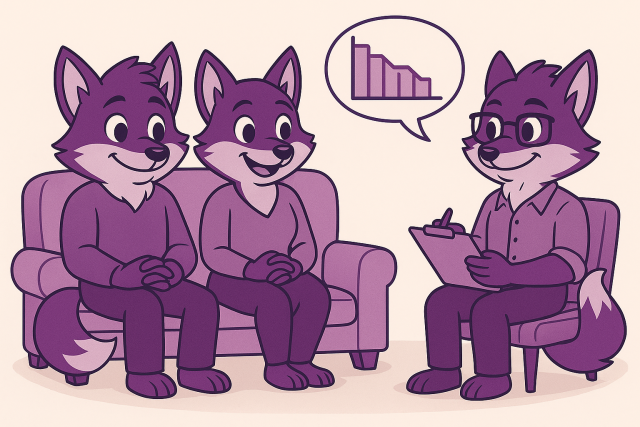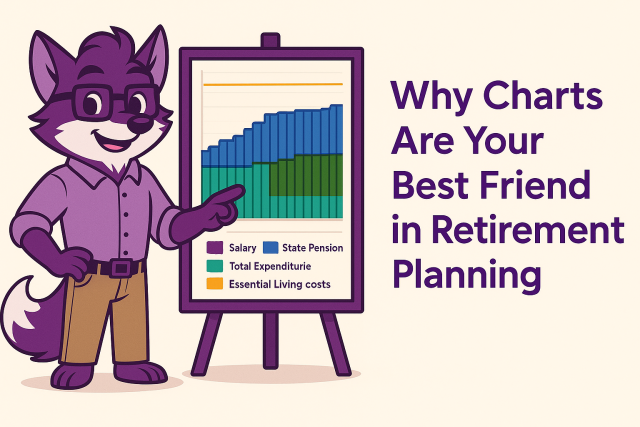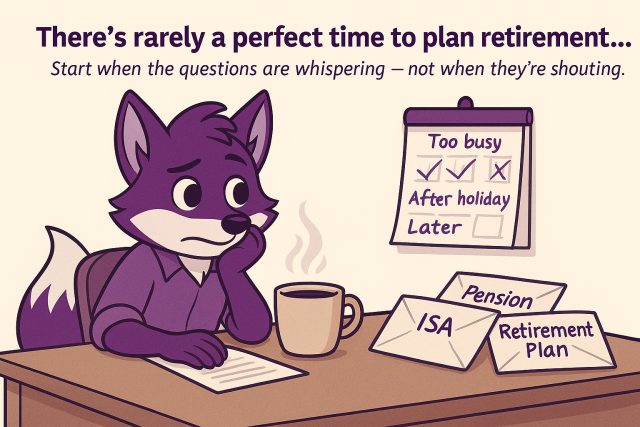When Retirement Planning Becomes Relationship Therapy

It happens in an instant.
One partner says, “I want to retire at 60.”
The other partner’s coffee cup pauses halfway to their lips. Their eyes widen. A look of genuine surprise, almost shock, crosses their face.
“Sixty? But I thought we’d both work until 65…”
The room goes quiet. I can feel the shift in energy as they both realise something profound: they’ve been planning separate futures. I’ve witnessed this moment many times in client meetings.
Couples who have shared decades of life together, raising children, managing a mortgage, and planning holidays, suddenly discover they’ve never had a real conversation about when they’ll stop working. The silence that follows speaks volumes.
People assume these conversations are avoided due to financial concerns or differing attitudes towards risk. But more often, it’s something deeper and more fixable. They simply haven’t talked about the future.
The Cashflow Breakthrough
Most people think cashflow planning is just spreadsheets and figures. But often, it’s actually relationship therapy in disguise. When I show a couple their first cashflow projection, something shifts. The abstract becomes tangible. For the first time, they can see how today’s choices shape their future and whether they’re on the right path.
Even more crucially, they can compare options side by side.
The Flat-Line Fallacy
But here’s where most retirement planning goes wrong.
Traditional retirement plans often assume people will spend the same amount each year for the rest of their lives. But life doesn’t work that way.
We break retirement into three distinct phases:
Active Retirement – The go-go years: full of travel, hobbies, and new experiences. Often the most expensive stage.
Mid Retirement – A steadier pace of life. Spending typically eases, and time might be spent with grandchildren or volunteering.
Later Retirement – Later years may bring rising healthcare or care-related costs, while lifestyle spending tends to decrease.
When couples see this more realistic framework, a lightbulb goes off.
Retirement isn’t one long chapter; it’s a series of seasons.
And that realisation makes it feel achievable. It opens the door to dreaming.
From Avoidance to Connection
And that’s when the magic happens.
This is the moment when the numbers give way to meaning. They stop avoiding the topic. They start imagining their future together. Bucket lists are created. Hidden dreams emerge. The conversation shifts from limitations to possibilities. They’re not just planning retirement. They’re reconnecting.
It’s Not About Risk. It’s About Clarity.
You might expect the biggest hurdle to be different risk tolerances. But that’s not what we see.
What we see more often isn’t about risk at all, it’s about confidence.
Usually, one partner feels less certain about the future. The projections bring clarity. The phased retirement model builds belief.
The breakthrough comes when they realise their dream life is actually sustainable. And if not, they know what levers to adjust, retire a year later, save a bit more, or downsize sooner.
It’s not about restriction. It’s about control.
What Financial Freedom Really Means
People talk about “peace of mind”, but what does that actually mean?
To us, it’s this:
Knowing money won’t hold you back.
It means being able to say, “Yes, this works. We can do this.”
And when couples reach that point, everything changes. Financial decisions become less stressful. Conversations about money become collaborative, not confrontational.
They move forward with confidence, together.
Starting the Conversation
If any of this sounds familiar, here’s the simplest next step:
Start the conversation.
Ask yourselves:
You don’t need all the answers. You just need to start.
We take those conversations and build a plan around them, one that connects your life goals to your financial reality.
Because it’s not just about retirement, it’s about removing uncertainty so you can move forward without fear.
Ready to Start Your Conversation?
Here’s the one question every couple should ask:
Do we know what our future together looks like after work?
If that question sparks surprise or uncertainty, you’re not alone. Most couples haven’t had that conversation yet.
But you don’t have to navigate this alone, a Financial Planner can help you:
- The conversation that once felt impossible becomes the foundation for everything that follows.




